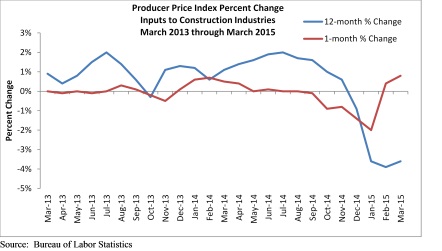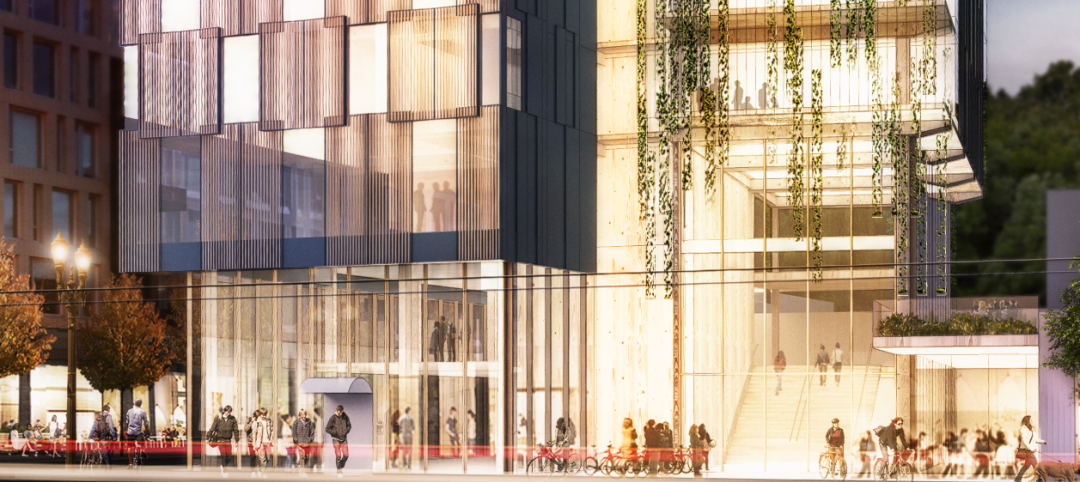Results from the Bureau of Labor Statistics showed that prices for construction materials rose 0.8% in March. According to Associated Builders and Contractors, Inc., it was the largest monthly increase in more than two years.
Prices for construction materials have risen for two straight months after falling for the previous six.
Although prices are up on a monthly basis, statistics showed that input prices are down 3.6% on a year-over-year basis, the fourth consecutive month this has occurred. The steady decline in input prices is the longest streak since 2009 as crude petroleum prices fell 4% in March and are down eight of the last nine months.
"Though U.S. nonresidential and residential segments continue to expand, global construction volumes remain suppressed by widespread weakness in Asia, Europe, and Latin America," said ABC Chief Economist Anirban Basu. "With the U.S. dollar likely to get stronger over the next few months as domestic interest rates begin to rise, there is little likelihood of significant increases in construction input prices over the next six to nine months. Overall producer prices managed to increase 0.5% on a monthly basis, the first increase since June 2014. This reading serves to increase the likelihood that the Federal Reserve will begin to increase short-term interest rates later this year."

There were only two key material categories that saw an increase in construction prices in March: fabricated strucutal metal produce prices (0.4%) and natural gas prices (1.5%).
While these two inputs rose, others fell:
- Prices for plumbing fixtures dropped 0.3% in March but remain up 2.5% year-over-year.
- The price of prepared asphalt, tar roofing, and siding dipped 0.4% in March.
- Iron and steel prices dropped 2.5% in March and are down 11.5% year-over-year.
- Prices for steel mill products slipped 1.9% in March and are down 4.8% on a yearly basis.
- Concrete products prices were flat but up 4.1% year-over-year.
- Crudge petroleum prices dropped 4% in March and are down 55% from the same time last year.
- Crude energy material costs decreased 1.4% in March and are down 43.7% from the previous year.
- Softwood lumed prices fell 4.1% and are down 7.4% year-over-year.
- Prices for nonferrous wire and cable were flat in March and rose 2.5% on a yearly basis.
To read the entire report, click here.
Related Stories
Building Materials | Jan 25, 2016
Johnson Controls to merge with Tyco International
The $20 billion deal is the latest corporate inversion maneuver.
Concrete | Jan 15, 2016
Fallingwater to Sydney Opera House: Ranking the world’s best concrete buildings
Large and small, some of the most iconic structures of all time were made of the composite building material.
| Jan 14, 2016
How to succeed with EIFS: exterior insulation and finish systems
This AIA CES Discovery course discusses the six elements of an EIFS wall assembly; common EIFS failures and how to prevent them; and EIFS and sustainability.
Building Materials | Nov 16, 2015
A new database sheds more light on building products’ content
The Quartz Project’s collaborators, which include Google, hope these data will better inform design decisions.
Building Materials | Nov 5, 2015
U.S. Naval Research Lab develops transparent aluminum
The material is made out of highly compressed aluminum powder.
Architects | Oct 20, 2015
Four building material innovations from the Chicago Architecture Biennial
From lightweight wooden pallets to the largest lengths of CLT-slabs that can be shipped across North America
Building Materials | Oct 16, 2015
Challenges in arctic, subarctic regions subject of new ASHRAE guide
Cold, remoteness, limited utilities, and permafrost addressed.
Building Materials | Sep 25, 2015
Dept. of Agriculture encouraging tall wood structure construction
Prize awarded for 10-story or higher wooden buildings
Building Materials | Aug 28, 2015
Structural steel buildings specification available for second public review
Next year's specification open for comments until Sept. 21
Sponsored | Building Materials | Jul 29, 2015
Glulam provides aesthetic, structural, and safety solution for Appleton Mills project
The Appleton Mills complex includes 5 million square feet of space, with an original structure built in the 1870s and another building added in 1906

















